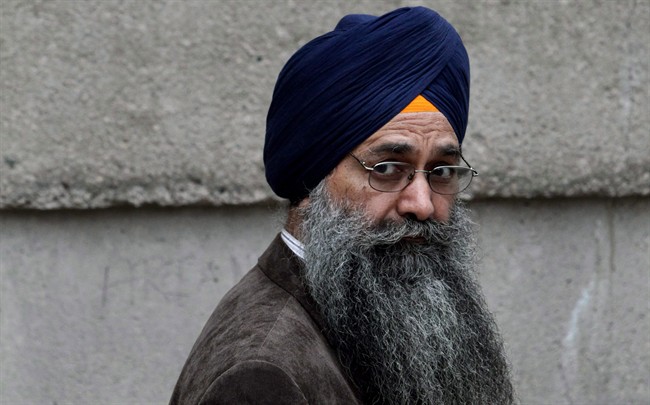The world profoundly remembers the 9/11 terror attacks in the United States that saw passenger airlines getting hijacked mid-air and crash into the World Trade Centre.
Thirty-seven years ago, another terror attack, the worst in aviation history, was commemorated in Canada recently.
June 23 is marked as the “National Day of Remembrance for Victims of Terrorism” in Canada, which has otherwise been lost in the annals of history and remembered only annually. The day marks the worst terror attack and mass killing in Canada’s history.
Canadian Prime Minister Justin Trudeau marked the day with a statement, “Today, I join all Canadians to pay tribute and remember those we have lost to terrorist attacks. I extend my deepest sympathies to the families and friends without their loved ones and to everyone living with pain and trauma caused by these senseless acts of violence.”
Thirty-seven years ago, on June 23, 1985, Air India Flight 182 departed Toronto in Canada and was to reach New Delhi, India via a pit stop in the United Kingdom.
The flight made its scheduled departure for London. It established contact with Heathrow Airport’s tower after making a routine stop in Montreal when Canadian officials removed three suspected parcels off the aircraft.

That was not enough.
It was going to be Canada’s worst tragedy.
The jet exploded mid-air, only 45 minutes away from its destination. The plane was traveling about 120 miles west-southwest of Ireland at a cruising altitude of 31,000 feet.
The attack was reportedly carried out by Sikh militants based in Canada, mostly Babbar Khalsa International organization members, a sectarian group calling for a Sikh sovereign state of Khalistan.
Before the 9/11 attacks, the bombing of Air India Flight 182 was the biggest aviation attack and caused the most fatalities globally. All passengers and crew, including 82 children, perished.
268 Canadians, the majority of whom were of Indian descent, 24 Indian citizens, and 27 British citizens were also among the deceased.
37 years ago, 329 innocent people – including 280 Canadians – were killed in a terrorist attack on Air India Flight 182. To honour them and all victims of terrorist attacks, the government declared June 23rd of every year the National Day of Remembrance for Victims of Terrorism.
— Justin Trudeau (@JustinTrudeau) June 23, 2022
In the years that followed, the Canadian authorities convicted just one of the perpetrators, Inderjit Singh Reyat, a Canadian auto mechanic who built the bomb. The other two arrested accused were acquitted after a little over four years in prison.
Justice remained elusive, but the incident was forgotten with time, unlike the 9/11 attacks.
The Aftermath
There were no alerts for emergencies or warnings before the aircraft went into flames. Heathrow employees sent out emergency rescue squads as the plane vanished from the radar, but 131 bodies were found in the Sea. There were no survivors.
Even though the cause or conspiracy of attack was initially unknown, it was ultimately known to be a plot of Canada-based Sikh extremists.
In the early 1980s, India was experiencing serious civil turmoil between Sikh and Hindu factions with the assassination of the Indian Prime Minister and Hindu-Sikh riots that led to many Sikh people dying and outraged the community the world over.
Two individuals were taken into custody five months after the air catastrophe. Talwinder Singh Parmar, one of the suspects, was accused of planning the attack by Canadian authorities, but the case was eventually dropped.
Another accused, Inderjit Singh Reyat, who lived in Vancouver and subsequently pleaded guilty to manslaughter after the bombing, received a five-year prison term in 2003. An investigation into the bombing of Air India Flight 182 was handed over to a specially appointed Canadian commission in 2006.

The panel concluded that the tragedy was caused by a “cascading series of errors” in its five-volume report, published in 2010. In particular, it discovered that Canadian intelligence and security organizations had engaged in “turf battles” rather than sharing information.
In an unprecedented link, the bombing of the Indian airliner was a part of a larger scheme that also involved attacking two other planes. Air India Flight 301 from Tokyo to Bangkok, Thailand, was supposed to be destroyed by the first two explosives.
However, the bomb-packed luggage exploded before being put onto the flight, leaving two baggage handlers dead. Because the attackers did not consider that Japan does not observe daylight savings time, the device detonated before it should have.
The second bomb was successfully detonated mid-flight after being carried onto Air India flight 182 in Canada. The bomb on Air India Flight 182 and the one that exploded at Narita International Airport (NRT) were connected, investigators looking into the bombings quickly concluded.

Classified as Terror Attack- Retroactively
The Air India flight had crashed in Irish airspace, far from Canada, and the tragedy was diminished as a Canadian story.
The Air India bombing was retroactively deemed “the single worst terrorist attack in Canada’s history” following September 11, 2001, attacks in New York 16 years later.
Canada’s failure to stop the attack and the ill-treatment of families were acknowledged in a public investigation and resulted in an apology from the federal government.
But rather than being remembered as a tale of loss and pain, the tragedy was again associated with terrorism. In Canadian history and popular memory, the continued grief of people who lost loved ones did not occupy a prominent position, writes The Conversation.
However, the Canadian Prime Minister’s acknowledgment reminds them of those who got lost in time in the middle of a flight, unaware of what fate was to befall them.
- Contact the author at sakshi.tiwari9555@gmail.com
- Follow EurAsian Times on Google News




